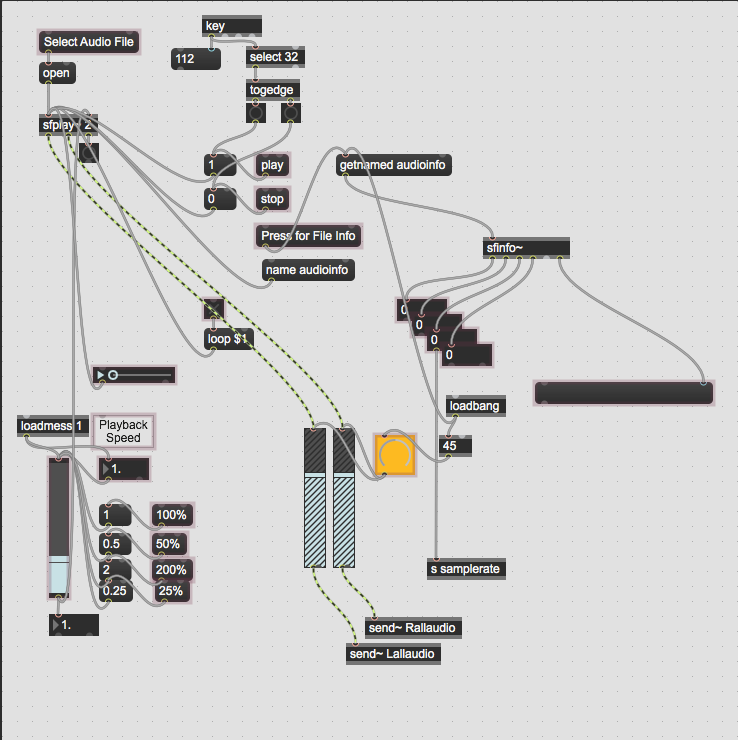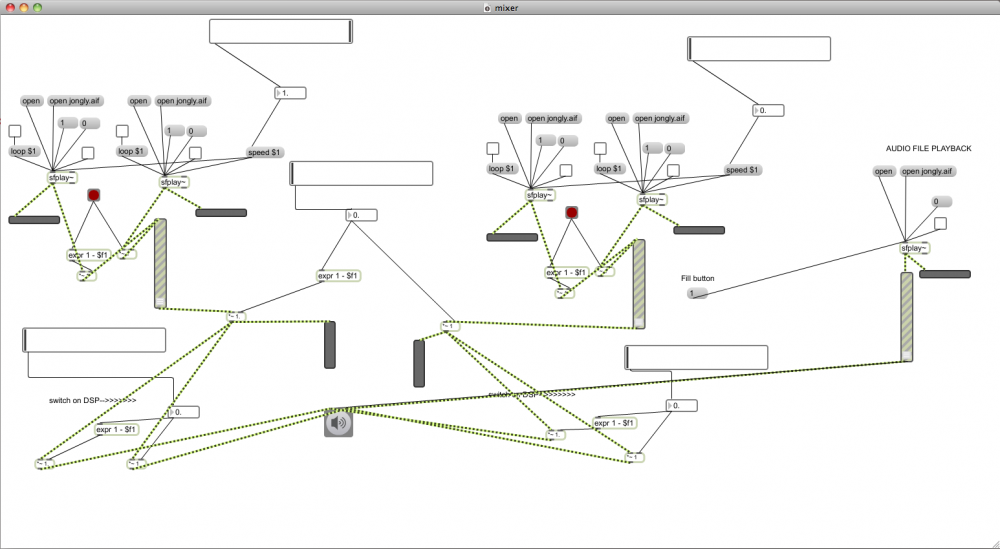
Then we can re-sample the chords and play them back as a whole in different pitches to make a short chord progression. This will give us 2 harmonics to choose from, in order to make our chord dynamically change if we like by mapping the transposition to knobs on our midi controller. We will need to create a chord structure, so let's take the root note of c3, and add two more notes to our root transposed to +2 and +4, for a C chord. The idea that I had was to create a chord out of the voicemail material, using something without key, although my friend Jeannie's voice is quite beautiful already, and turn it into something more like a flute or organ perhaps. Let's take our voicemail, processed by SoundHack, and trigger notes from Max into Live using Max4Live.
MAX MSP PLAY AUDIO FILE FREE
This would be no small task, as the "printed" audio material is sort of tied together with the neighboring frequencies of the recording, and are difficult to free from the adjacent frequencies.Īs a more creative application of sound hacking, you can employ granular synthesis techniques to segment audio into tiny bits, to randomize playback of audio "grains" and change pitch and volume in real time.įigure 3: The customized tutorial in Live's "Presentation Mode" which hides unnecessary details As an Audio Engineer, I am frequently asked by friends if it is possible to completely remove a vocal or crowd noise from a concert recording or media event.

The Sound Hack Max Msp externals allow us to accomplish audio engineering tasks previously thought impossible. One analogy of spectral synthesis is kind of like making the resin-based paint from a Jackson Pollock piece wet again, and swirling it around with a brush or slinging it onto a different canvas to make your own iteration. The Soundhack externals for Max Msp present a myriad of paths to reach into an audio file and flip it inside out, or to glean portions of frequency from the material in order to recreate the sound entirely.

MAX MSP PLAY AUDIO FILE SOFTWARE
One such implementation of this methodology is the use of external software that extends these products.

Figure 1: A customized ("hacked!") version of a tutorial on MIDI in M4L


 0 kommentar(er)
0 kommentar(er)
